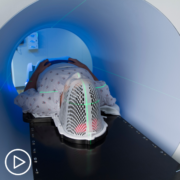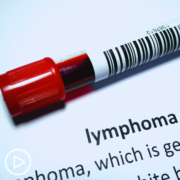Head and Neck Cancer Staging | What Patients Need to Know
Head and Neck Cancer Staging | What Patients Need to Know from Patient Empowerment Network on Vimeo.
What do head and neck cancer patients need to know about staging? Expert Dr. Ari Rosenberg discusses the testing involved in determining head and neck cancer stages.
Dr. Ari Rosenberg is a medical oncologist and Assistant Professor of Medicine at the University of Chicago Medicine. Learn more about Dr. Rosenberg.
See More From The Pro-Active Head and Neck Cancer Patient Toolkit
Related Programs:

|

|

Expert Advice for Newly Diagnosed Head and Neck Cancer Patients |
Transcript:
Katherine:
How is head and neck cancer staged?
Dr. Rosenberg:
Yeah, so after the diagnosis of head and neck cancer, there’s generally a number of tests that are done to determine where it spreads to.
Where it started, where it spreads to, to figure out what the best treatment approach is. So, oftentimes, that starts with a physical examination, often in combination with an ENT, or a head and neck surgeon. Oftentimes, that will involve endoscopy, which is a camera that the ENT uses to look very closely and carefully on the extent of the tumor itself.
Additionally, we generally tend to use imaging as well, in order to stage or determine the extent of where the tumor might have spread to. Oftentimes, that involves imaging of the head and neck, of course, so that’s sometimes a CT scan, or an MRI scan. Oftentimes, it involves imaging of the chest to see if there’s been any spread to the chest or the lungs, that’s oftentimes a CT scan of the chest.
And typically, that also involves, in many cases, a PET CT scan, which is a specialized scan that actually looks at the whole body and identifies where, in as precise a manner as we can determine, where the cancer has spread to.
So, I would say that’s generally the overview. Some of the subtypes may have some other tests that may be specific to your specific scenario, but I think those are some of the more general staging evaluations that we do.










